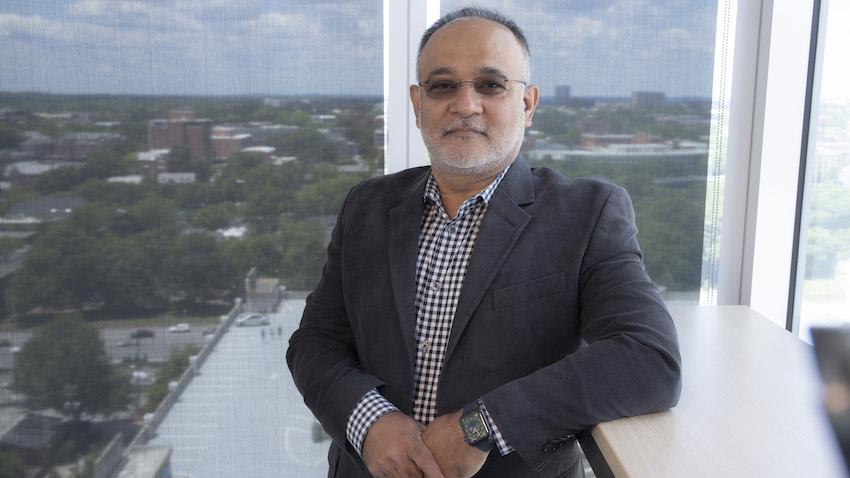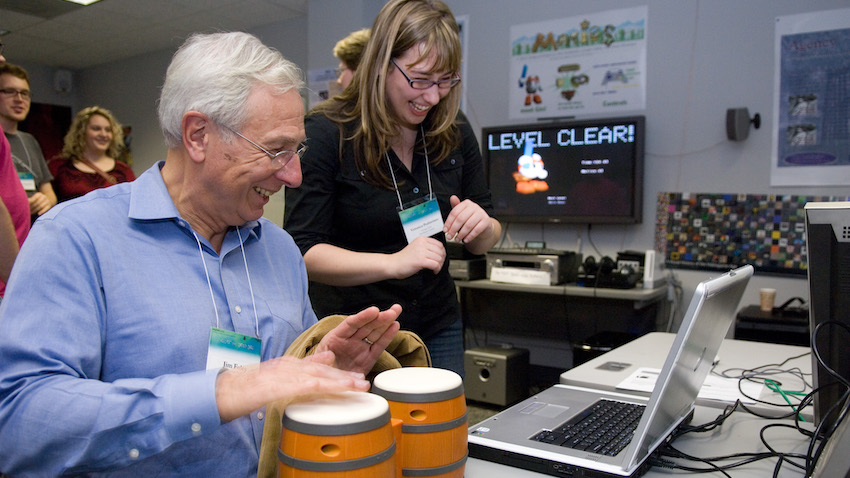
Georgia Tech Faculty Papers Recognized Among the Best in SIGGRAPH History
To celebrate its 50th anniversary, the Association of Computing Machinery’s Special Interest Group in Graphics (ACM SIGGRAPH) published a second volume of its Seminal Graphics Papers.
The Seminal Graphics Papers contain noteworthy papers presented at the SIGGRAPH Conference over the past 50 years. Seven current and former faculty and students from Georgia Tech had their papers republished in Seminal Graphics Papers: Pushing the Boundaries, Vol. 2.
Professor Gregory Turk, who received the 2012 ACM SIGGRAPH Computer Graphics Achievement Award, and Distinguished Professor Irfan Essa each had two author credits in Vol. 2. Turk and Essa collaborated on the paper Graphcut Textures: Image and Video Synthesis Using Graph Cuts along with former Georgia Tech Ph.D. students Vivek Kwatra, Arno Schödl, and former faculty member Aaron Bobick. The paper was presented at the 2003 SIGGRAPH Conference.
The paper introduced a novel algorithm for image and video synthesis. It demonstrated how they could use the algorithm to merge different images to create a new scene interactively.
“As the project was developing, we discovered that hiding the seams in this way could also be used to edit together parts of separate photos, such as taking a house from one image and placing it beside a river in a second image,” Turk said. “I think that this photo editing technique was the idea that had the most lasting impact from this paper.”
Turk said he was honored to be an advisor on the paper, but most of the credit should go to the student authors.
Seminal Graphics Vol. 2 also includes a paper Turk co-authored when he was a student at North Carolina in 1989. Titled Pixel-planes 5: A Heterogenous Multiprocessor Graphics System Using Processor-Enhanced Memories, the paper influenced graphic cards (GPUs) that are popular today.
“My portion of that work was to demonstrate how such graphics hardware could be used to produce procedural textures — patterns like clouds or water that are created by evaluating mathematical functions,” Turk said.
Essa and Schödl also worked alongside Microsoft Research on the Seminal Graphics Vol. 2 published paper Video Textures. Presented at SIGGRAPH in 2000, the paper introduced video texture — a continuous and varied stream of images that randomly rearranges frames from a source video. It allowed video loops to be created and played continuously without any visible discontinuities.
Essa said it is now a widely used technique commonly covered in most introductory computer vision, computer graphics, and computational photography courses.
Associate Professor James Hays also had an entry to Vol. 2. He co-authored the 2007 paper Scene Completion Using Millions of Photographs. The paper answered, “What can be done with a million photographs?”
When the paper was presented, Hays, a Ph.D. student at Carnegie Mellon, constructed an algorithm based on a database of over one million photographs. The algorithm patched holes in images by finding similar image regions in the database.
“As far as I know, it was the first paper in the computer vision or computer graphics community to use more than a million real images for a task,” Hays said.
“I think the paper is interesting today because of the amazing results that we're seeing from large-scale models such as language-conditioned diffusion models. Those models train on more data, and they are much more clever about composing different concepts than the cut, paste, and blend of Scene Completion. I think Scene Completion was some of the first evidence of the power of large-scale image collections for imaging tasks.”
The entire collection of the Seminal Graphics Papers is accessible through ACM’s digital library.



